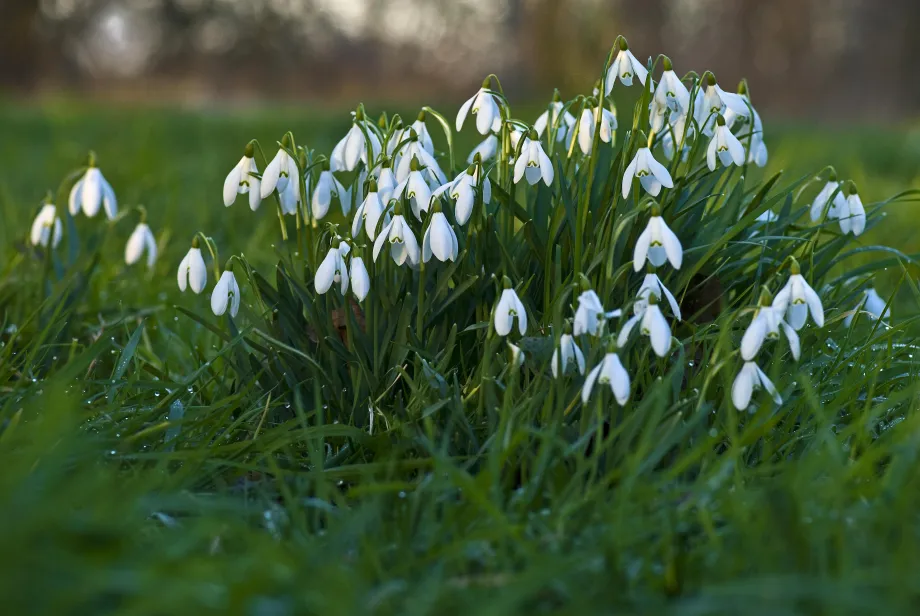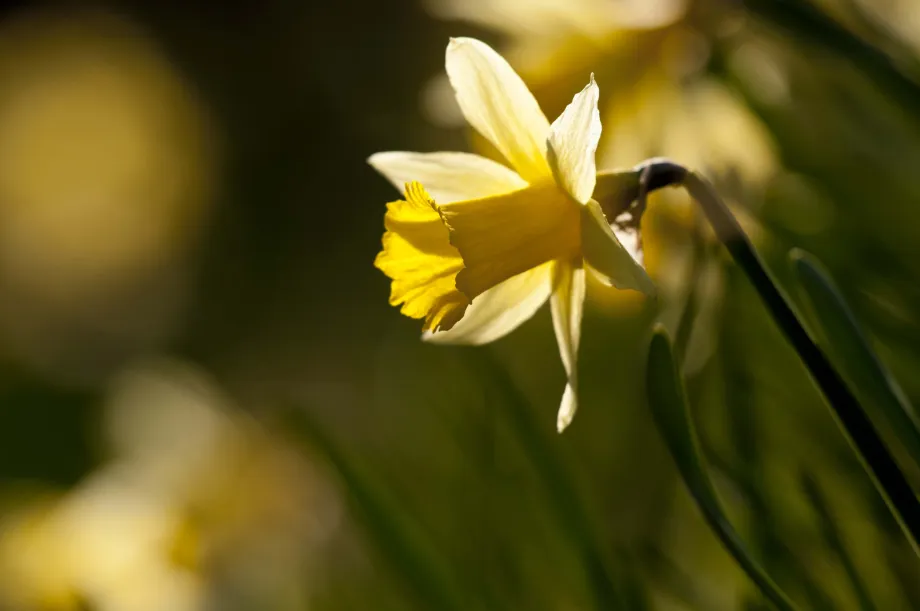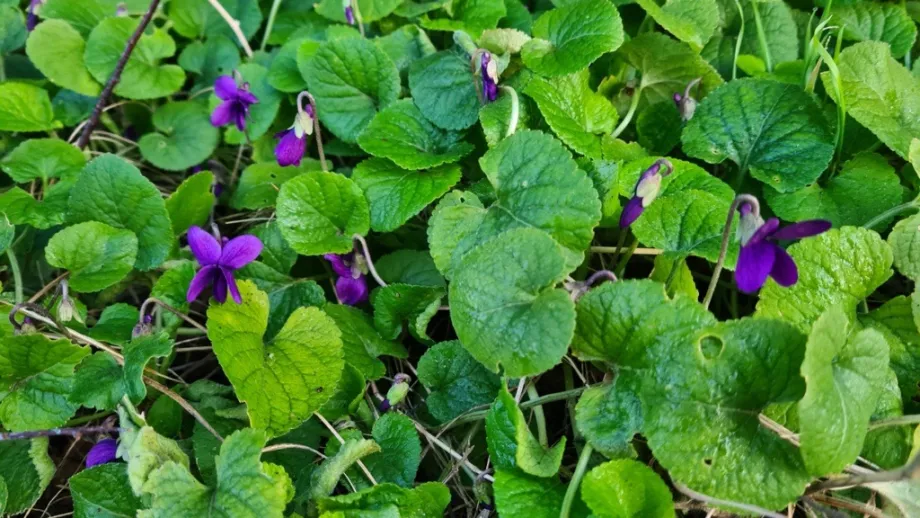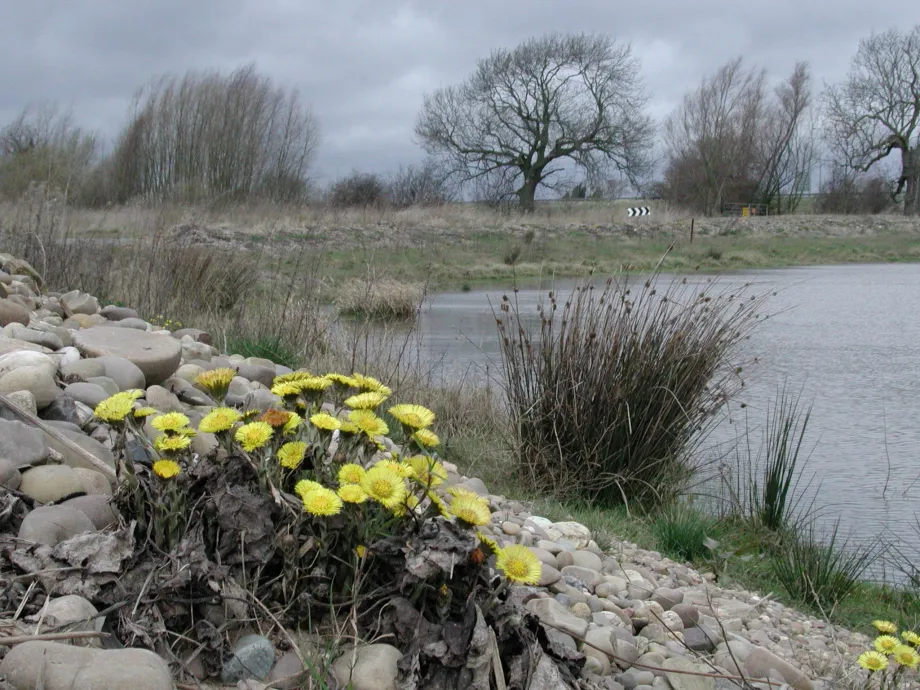
©Les Binns
Perhaps the most famous early spring flower, the snowdrop has long been a symbol of the coming light. In the ancient Celtic festival of Imbolc (celebrated on February 1st), for example, snowdrops are often celebrated as embodying hope and renewal.
It was once thought that snowdrops were ‘shy’, given their delicately drooping snowy heads – when in actual fact, this has the useful function of helping the pollen within stay dry.
You’ll spot them in pastures, woodlands, orchards, and gardens, typically favouring damper soil and a bit of shade.
Daffodils

Daffodils start to flower when temperatures in the soil reach 10C or above – so typically March or April, but it’s not uncommon (especially given our changing climate) to see them in February.
Sometimes, the February sun will warm them enough to see them flower, only to disappear into frost with the next inevitable cold snap. Shakespeare celebrated the daffodil as the flower that “comes before the swallow dares”!
Despite their iconic status as a symbol of spring (and Easter) in Britain, these charming flowers aren’t native – but were introduced from other parts of Europe.
Primroses

©Neil Wyatt
It’s around this time that primroses, too, will start emerging. The cheerful little yellow or pink flowers grow in clusters and can be found at the base of hedgerows and in grasslands and woodlands.
They’re actually an indicator of ancient woodland because of their lengthy colonisation times, so if you do spot them, you could be standing in a rare habitat.
And like most flowers, they’re not just a pretty face! Primroses provide a vital nectar source for butterflies like small tortoiseshell and brimstone. Plus, for centuries, they have had a reputation as healing plants used for healing wounds and in skin preparations.
Sweet violets

© Steve Weeks
This low-growing perennial wildflower is known for its heart-shaped leaves and purple petals. They’re widespread but increasingly uncommon – which is why you might not recall seeing swathes of these in recent memory (unlike the snowdrop).
If you do want to see the romantic sweet violet, your best bet is a woodland or shaded bank under a hedge.
Their sweet scent has seen them used to make perfumes and deodorise homes throughout history, while their edible petals can often be seen atop cakes and as a colourful salad garnish.
Colt’s-foot

©Philip Precey
Slightly different from the conventionally beautiful ‘spring flower’, colt’s-foot is a lesser-known but often-seen perennial plant resembling a dandelion.
The colt’s-foot is so named because of its leaves that look like the hooves of a young horse. It’s a creeping plant with a daisy-like yellow flower that thrives in waste ground, on road verges, and field edges.
Historically, it’s been used as a remedy for coughs and colds, lending it the other common name of ‘Coughwort’. In more recent times, though, it has been discovered to have toxic pyrrolizidine alkaloids in its flowers!
Spring crocus

© Zsuzsanna Bird
The final February wildflower we’ll spotlight is the crocus, a typical spring woodland backdrop. It’s not native to Britain but is rather naturalised here, with some sources saying crocuses were first brought to the UK in 1330.
They add pops of colour to woodlands, hedgerows, parks, churchyards, and gardens. You’ll recognise them by their purple or yellow petals and bright yellow stamens.
Other February wildflowers
This list is by no means exhaustive – why not head out to one of our reserves and see what you can spot?
You might also start to see...
- Dog’s mercury
- Glory of the snow
- Lungwort
- Cherry plum
- Alexanders
- Saxifrage
- Winter aconites
Learn more about Kent’s wildflowers here and, if you’re a keen gardener, be sure to check out our Spring Wilder Gardens workshop coming up at the end of March.

